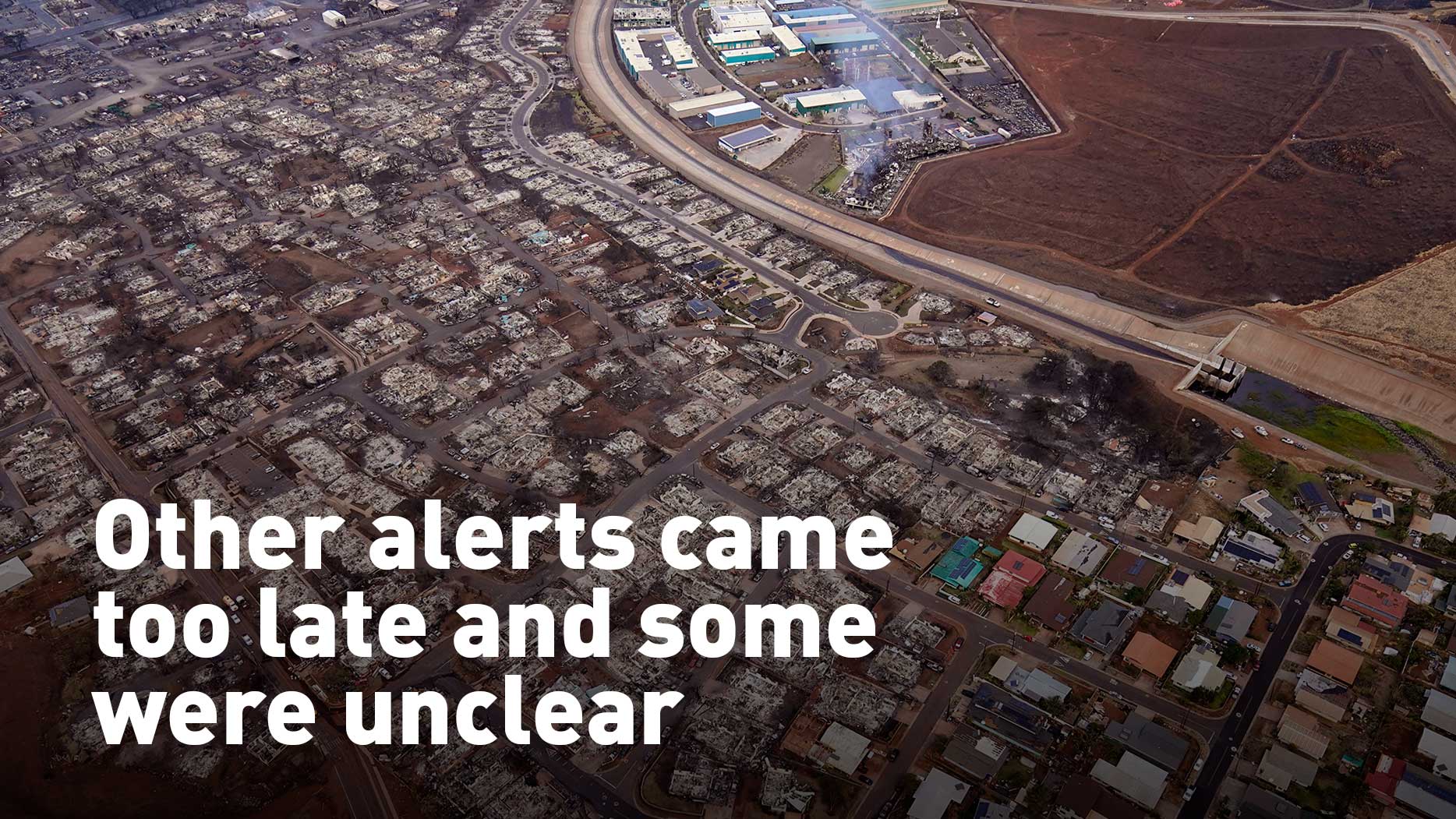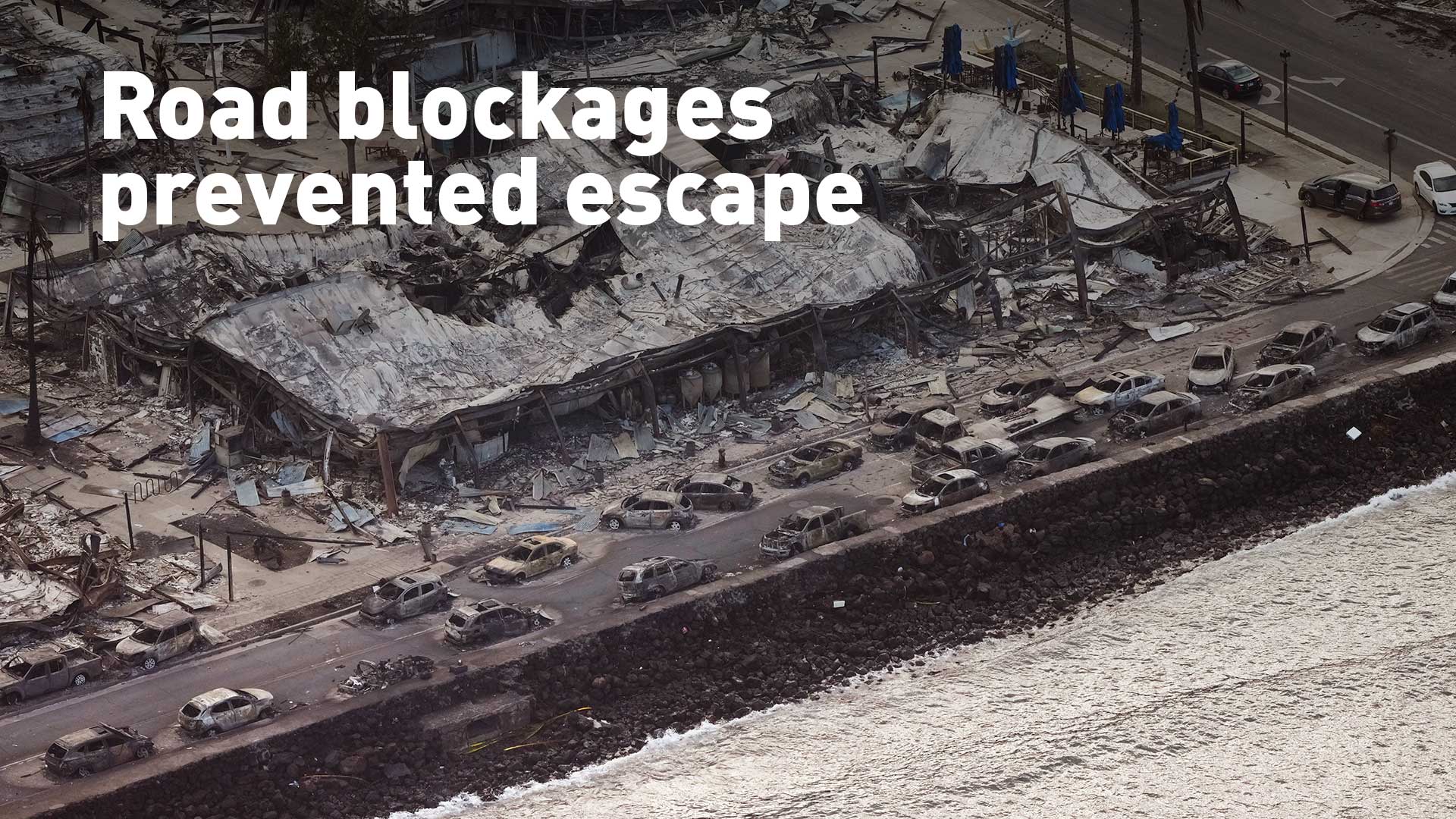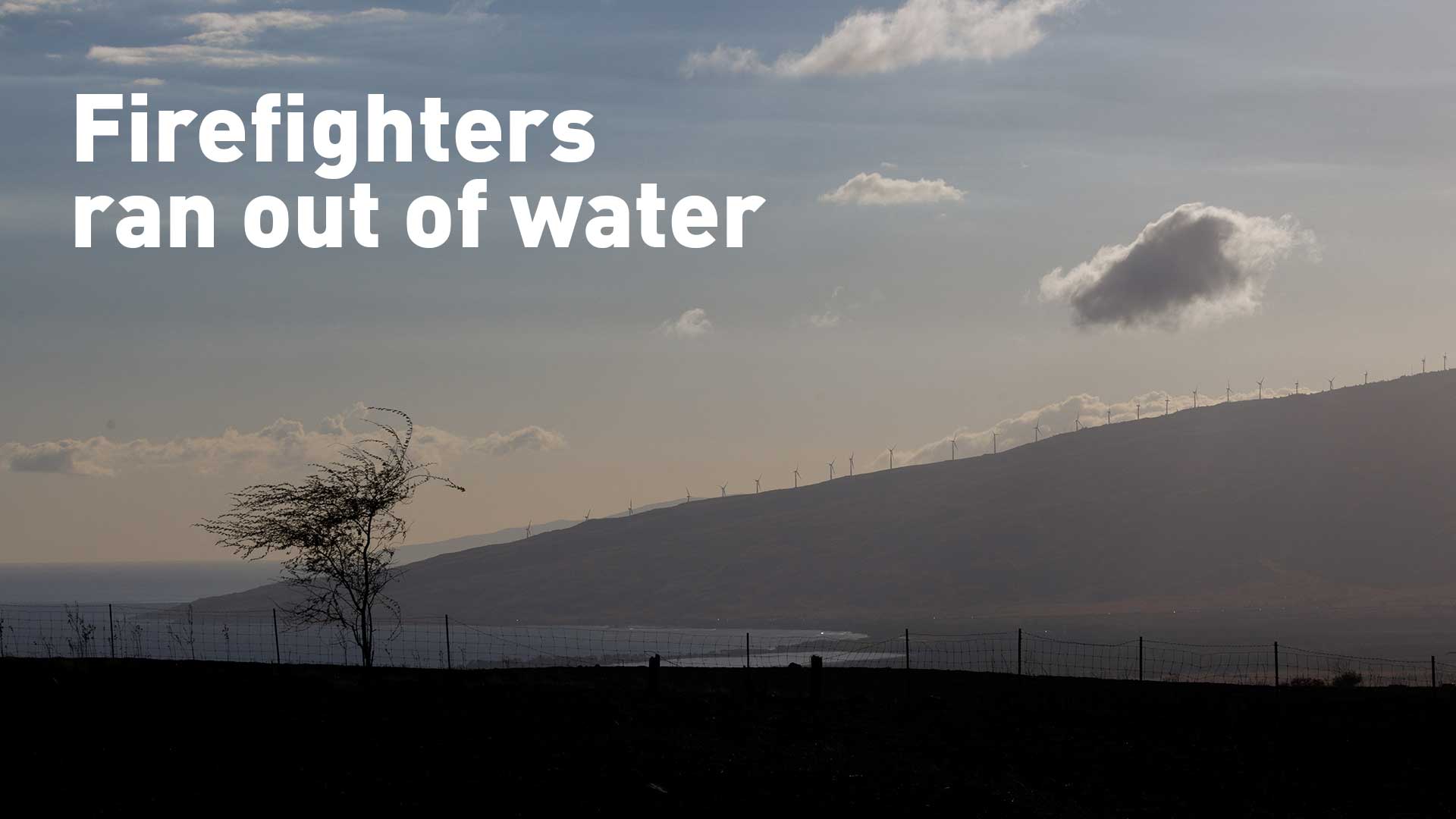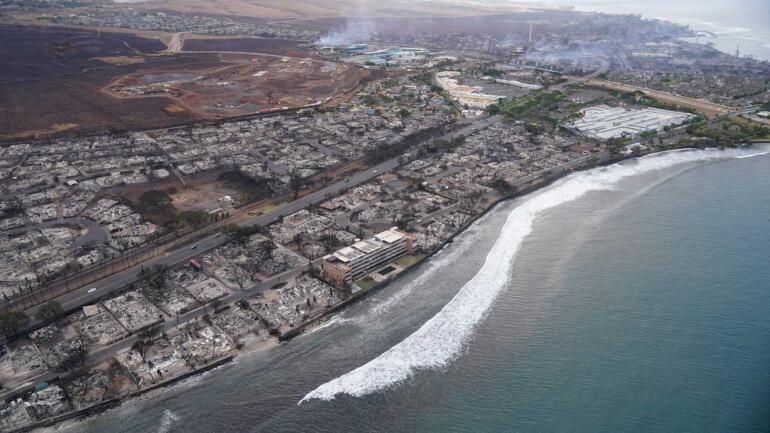A number of systemic failures are being reported about the alert and evacuation efforts in the wildfire on Aug. 8 that razed the town of Lahaina on the Hawaiian island of Maui.
More than 100 people have died so far in the deadliest wildfire in the U.S. in over a century.
Hurricane winds over 70 miles per hour fueled the blaze that spread within minutes and destroyed the beloved town.
The state’s Attorney General has said that her office will conduct a review of the decisions and policies surrounding the wildfires.
Here’s what’s been reported about the shortcomings in the response:
Warning sirens never went off

Days after the fire, an official from the state’s emergency management agency confirmed what residents had been reporting, that none of the 80 sirens on Maui were activated in the Lahaina fire.
The lack of warning is surprising in a state with the world’s largest outdoor siren warning system to alert residents of natural disasters.
Hawaii’s alert system is tested each month and was last tested a week before the fire.
During that test, the tone in Maui was too short, so the system was tested again later that day and passed, the AP reported.
Hawaii Governor Josh Green has asked the Attorney General to look into the failure of the outdoor warning sirens but in interviews with CNN and MSNBC, Green said officials believe the sirens were immobilized by the extreme heat of the fire. He also said the high winds prevented helicopters from dropping containers of ocean water on the fire.
Other alerts came too late and some were unclear

Emergency alerts using other methods such as social media, television, and radio did not reach many due to power and cellular outages, the AP reports.
In some cases those alerts told people to shelter in place.
At 9:55 a.m. on Aug. 8, the county reported that a fire in Lahaina’s most inland neighborhood was fully contained, but warned of high winds over the day.
Many were without power due to downed power lines. By 3:30 p.m., the Lahaina fire had escaped containment, but wasn’t updated by the fire department until 4:45 p.m. and didn’t get posted to its Facebook page until 5 p.m., the AP reports.
By that time people were in cars surrounded by flames in downtown Lahaina.
The first alert warning people to evacuate an inland subdivision in Lahaina was made by Hawaii’s emergency management agency at 4:29 p.m. on X (formerly Twitter). People were told to shelter at the Lahaina Civic Center.
Then around 5 p.m., Maui County wrote on on Facebook: “Flareup forces Lahaina Bypass road closure; shelter in place encouraged.”
By this time people were running from acctheir homes that were already ablaze.
Road blockages prevented escape

The major highway out of the city, Lahaina Bypass road, was closed at 3:30 p.m.
This forced many fleeing in their cars to use Front Street through downtown Lahaina, causing a bottleneck of traffic.
Many of those killed were believed to have died in their cars, the Los Angeles Times reports citing law enforcement.
Some defied the closure and drove through the barricade, while others fled their cars and ran into the choppy ocean.
At 5:20 p.m. the fire department wrote on its Facebook that Lahaina Bypass road was open again. By then, for many it was too late.
The U.S. Coast Guard didn’t get its first notification of the impacts of the fire until 5:45 p.m., after reports that people had jumped into the ocean to escape the flames, the AP reports.
Firefighters ran out of water

Firefighters battling the flames about a mile from the center of Lahaina, reported that the hydrants they were using started to run out of water, according to the New York Times.
Crews, unable to fight the fire, watched in vain as it advanced on Lahaina, the Times reported.
Lahaina uses water from a creek and well water to fight fires, but the state has been facing continuous drought conditions that have impacted supply.
They recently began digging a new well two months ago to increase water availability, the Times reported.
 CGTN America
CGTN America

